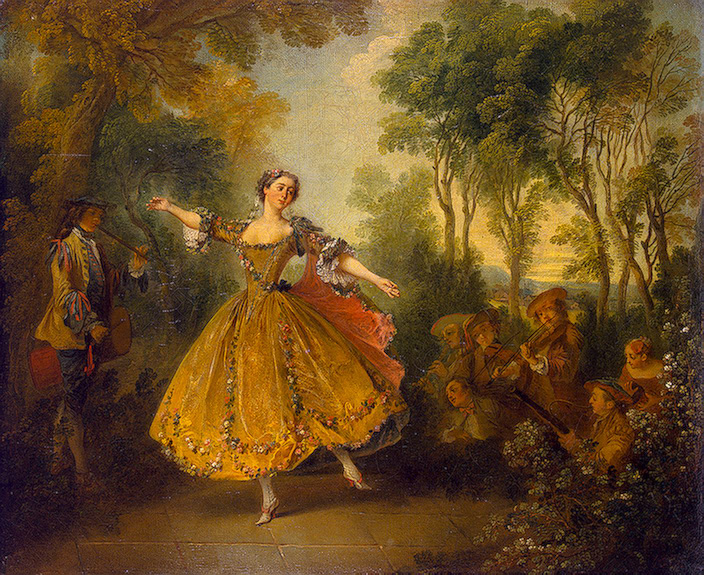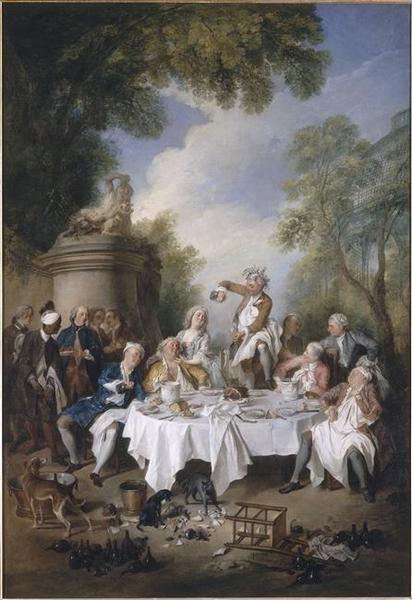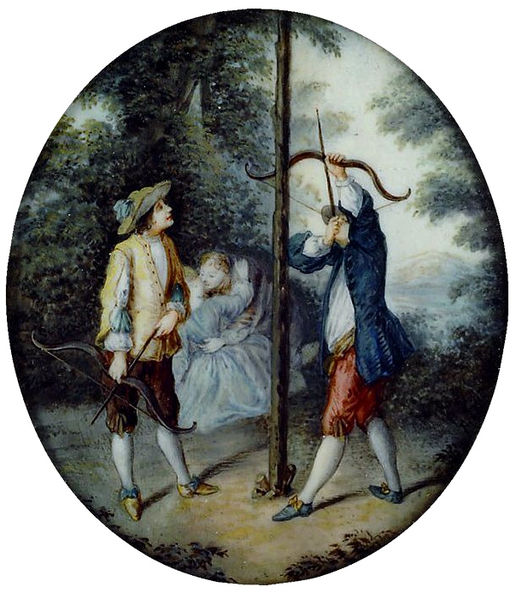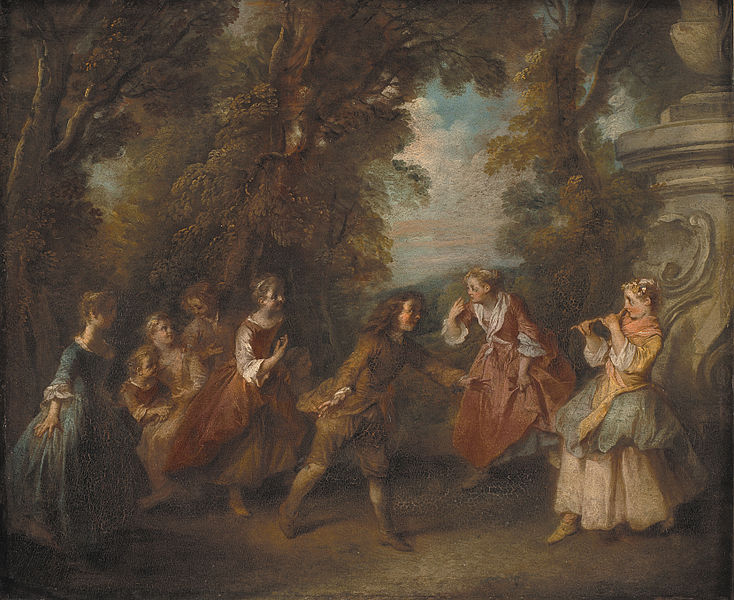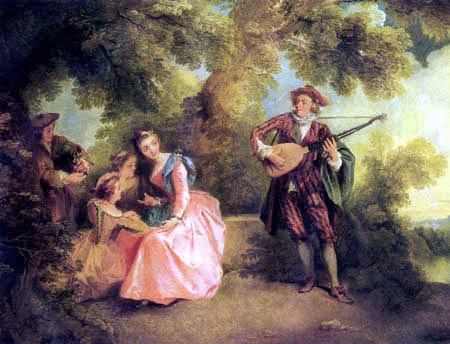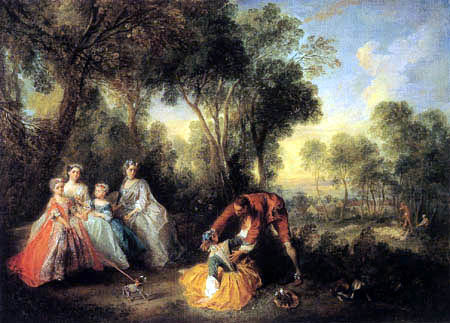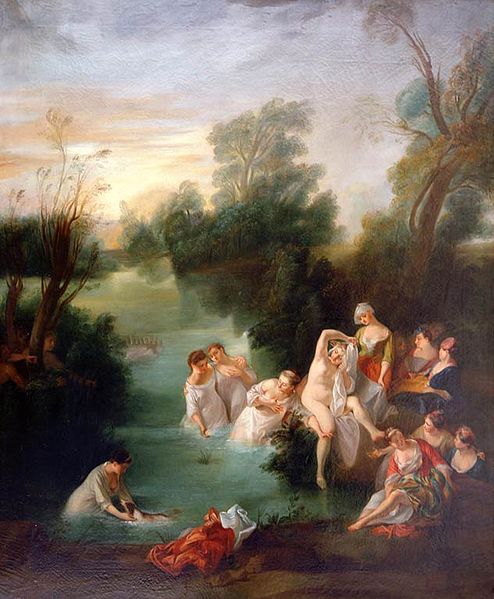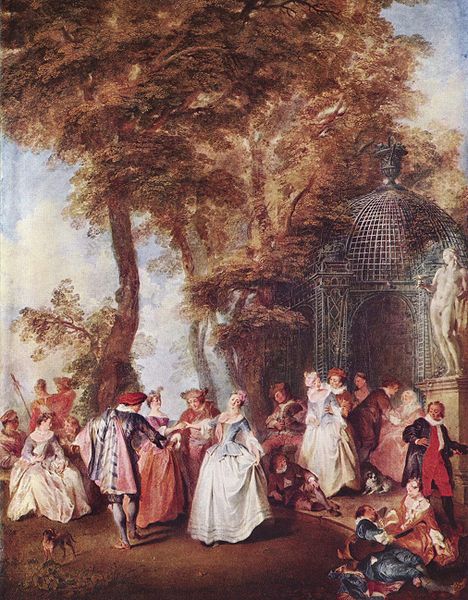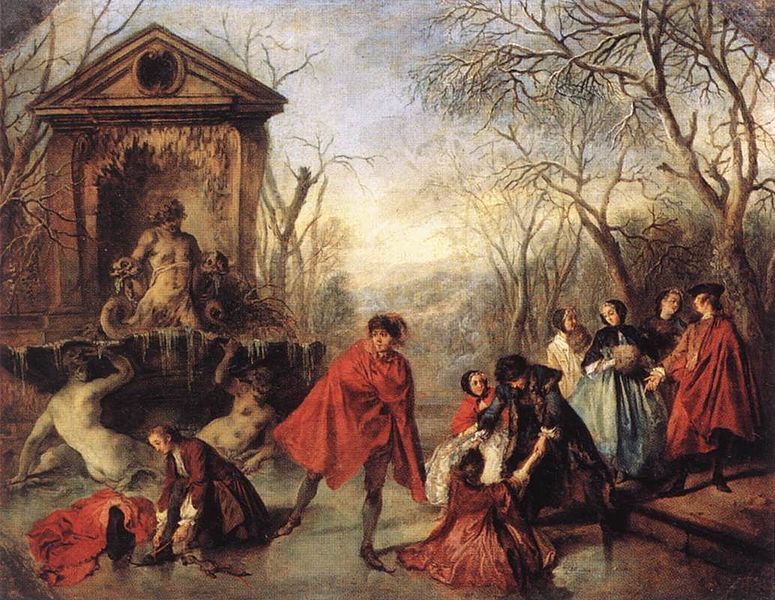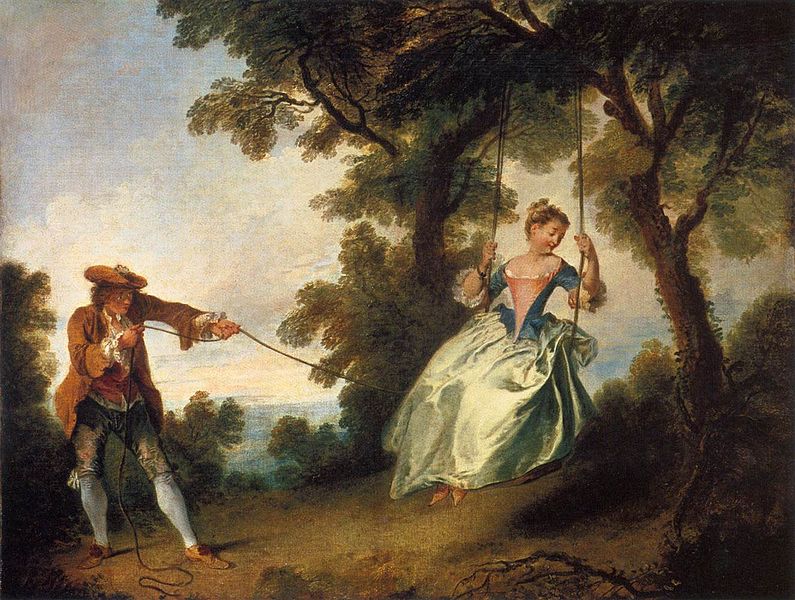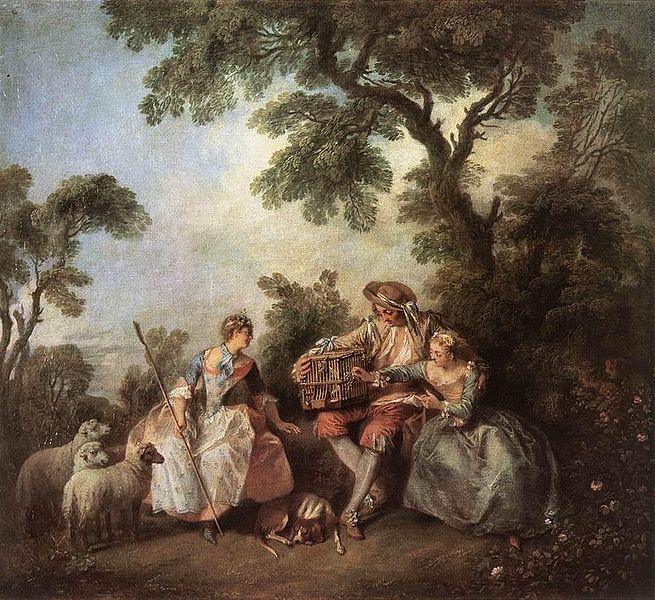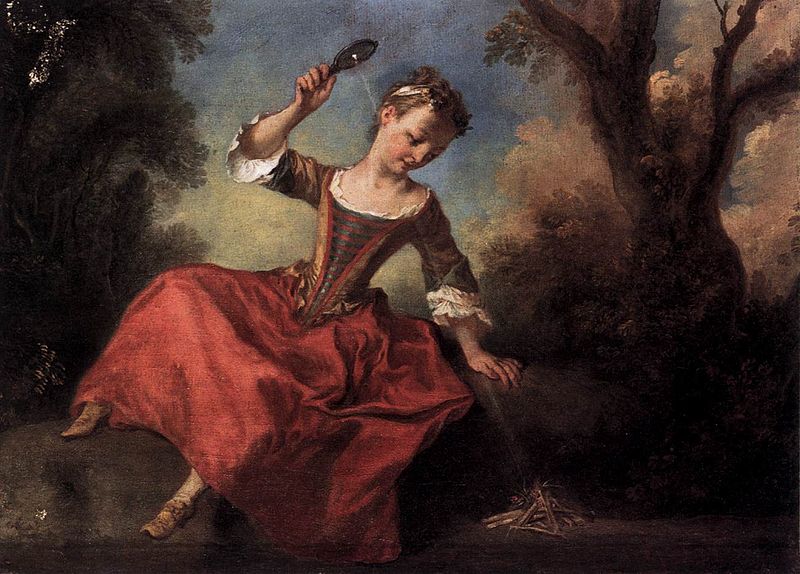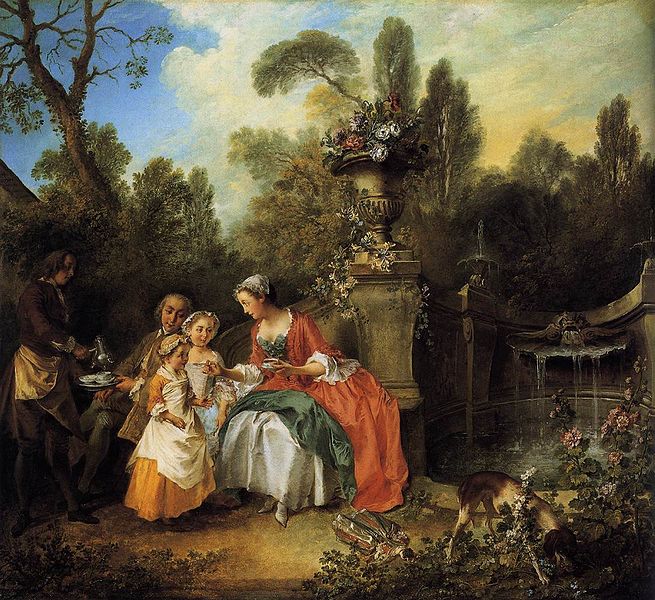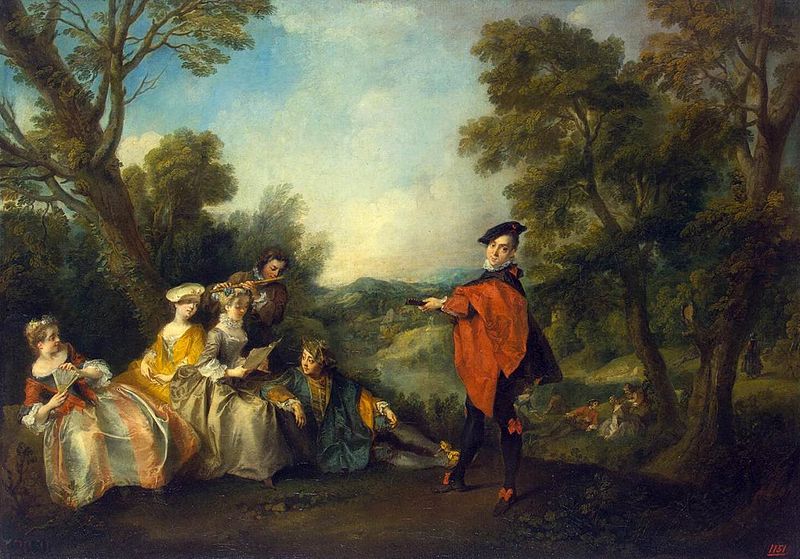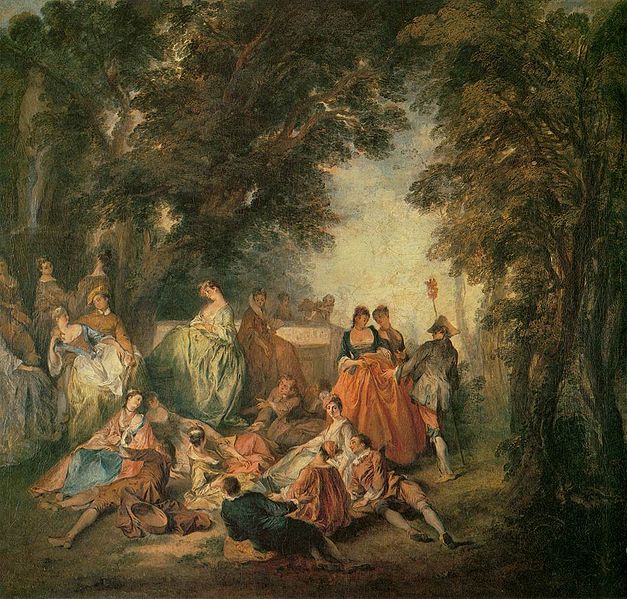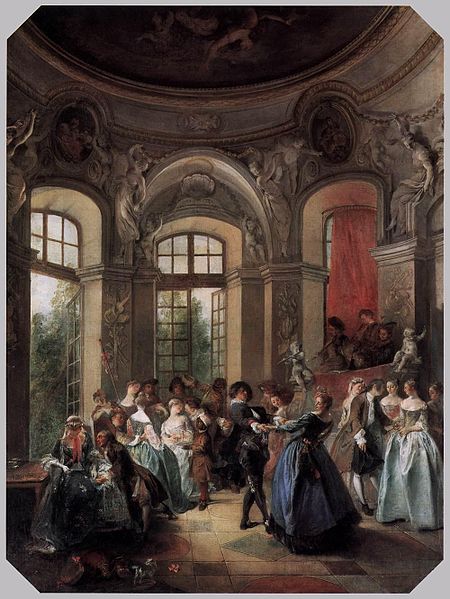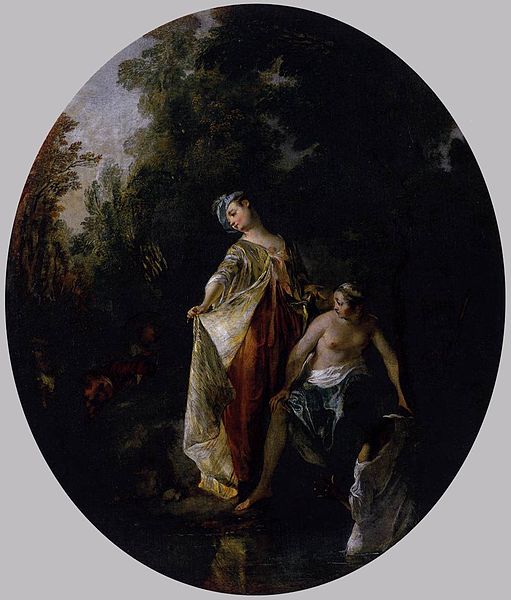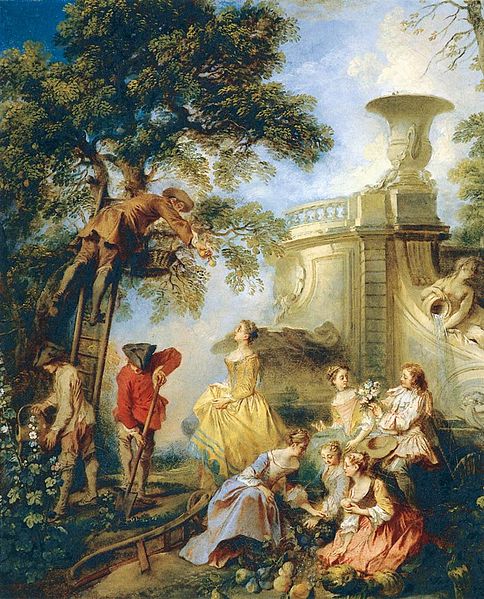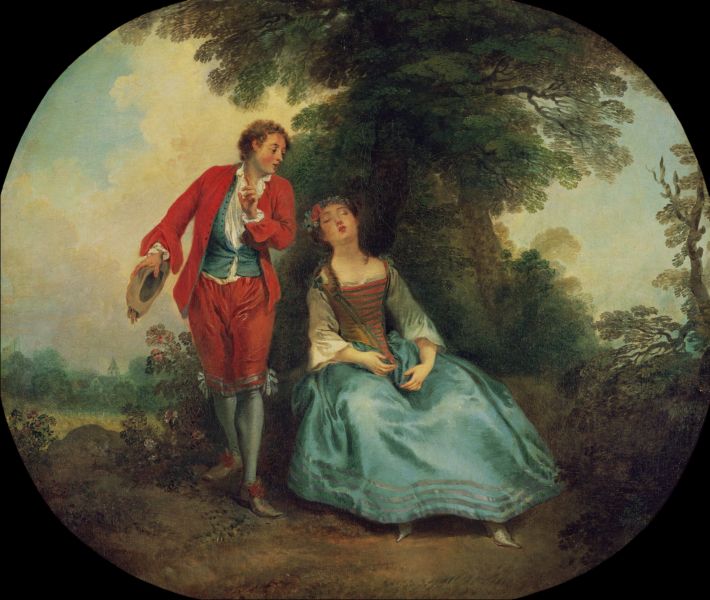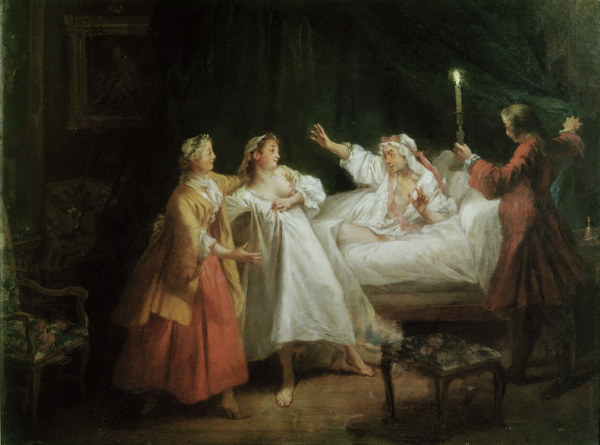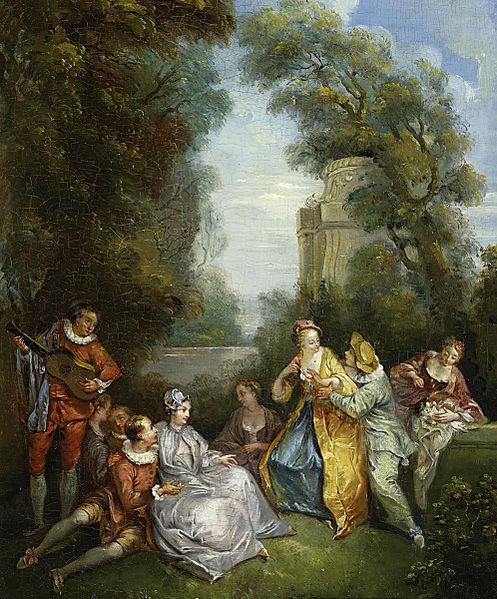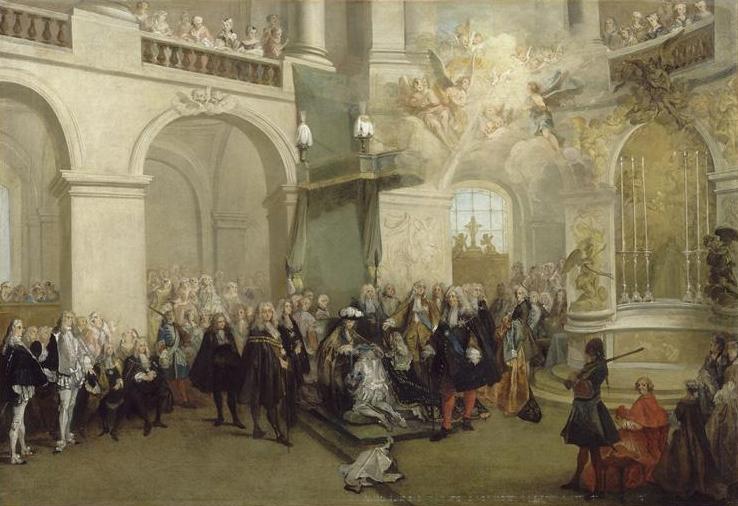<Back to Index>
- Painter Maria Anna Angelika Katharina Kauffman, 1741
- Painter Nicolas Lancret, 1690
PAGE SPONSOR
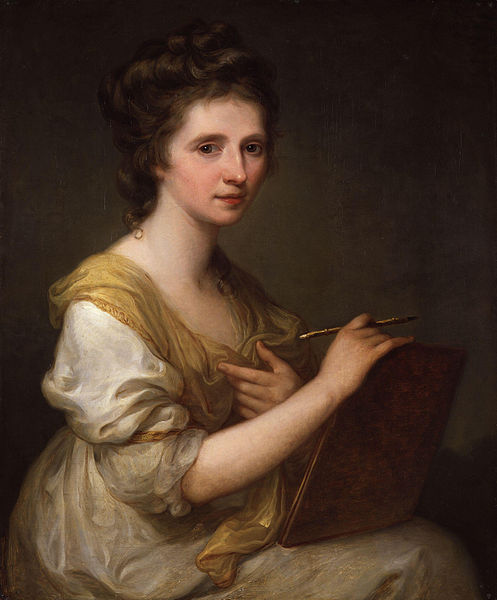
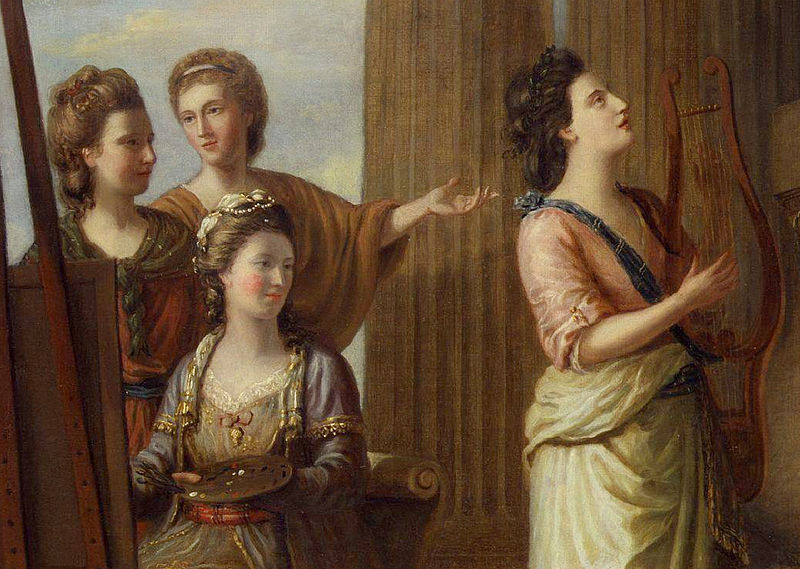
Maria Anna Angelika / Angelica Katharina Kauffman (30 October 1741 – 5 November 1807) was a Swiss - Austrian Neoclassical painter. Kauffman (not Kauffmann) is the preferred spelling of her name; it is the form she herself used most in signing her correspondence, documents and paintings.
She was born at Chur in Graubünden, Switzerland, but grew up in Schwarzenberg in Vorarlberg / Austria where her family originated. Her father, Joseph Johann Kauffman, was a relatively poor man but a skilled painter, who was often traveling for his work. It was he who taught his precocious daughter. Angelica rapidly acquired several languages from her mother, Cleophea Lutz, read incessantly and showed talent as a musician, but her greatest progress was in painting, and by her twelfth year she had become a notability, with bishops and nobles for her sitters.
In 1754 her father took her to Milan. Later visits to Italy of long duration followed. In 1763 she visited Rome, returning again in 1764. From Rome she passed to Bologna and Venice, everywhere feted for her talents and charm. Writing from Rome in August 1764 to his friend Franke, Winckelmann refers to her popularity. (She was then painting his picture, a half length; of which she also made an etching.) She spoke Italian as well as German, he says, and expressed herself with facility in French and English - one result of the last - named accomplishment being that she became a popular portraitist for British visitors to Rome. “She may be styled beautiful,” he adds, “and in singing may vie with our best virtuosi.”
While at Venice, she was induced by Lady Wentworth, the wife of the British ambassador, to accompany her to London. One of her first works in London was a portrait of David Garrick, exhibited in the year of her arrival at “Mr Moreing's great room in Maiden Lane.” The rank of Lady Wentworth opened society to her, and she was everywhere well received, the royal family especially showing her great favor. Her firmest friend, however, was Sir Joshua Reynolds. In his pocket book her name as “Miss Angelica” or “Miss Angel” appears frequently; and in 1766 he painted her, a compliment which she returned by her Portrait of Sir Joshua Reynolds. Another instance of her intimacy with Reynolds is to be found in her variation of Guercino's Et in Arcadia ego, a subject which Reynolds repeated a few years later in his portrait of Mrs Bouverie and Mrs Crewe.
When, in about November 1767, she was entrapped into a clandestine marriage with an adventurer who passed for a Swedish count (the Count de Horn), Reynolds helped extricate her, and it was doubtless owing to Reynolds's good offices that she was among the signatories to the petition to the king for the establishment of the Royal Academy. In its first catalog of 1769 she appears with “R.A.” after her name (an honor she shared with one other woman, Mary Moser); and she contributed the Interview of Hector and Andromache, and three other classical compositions.
Her friendship with Reynolds was criticized in 1775 by fellow Academician Nathaniel Hone in his satirical picture The Conjurer. This attacked the fashion for Italianate Renaissance art, ridiculed Reynolds and included a nude caricature of Kauffman, later painted out by Hone. The work was rejected by the Royal Academy.
From 1769 until 1782 Kauffman was an annual exhibitor with the Royal Academy, sending sometimes as many as seven pictures, generally on classical or allegoric subjects. One of the most notable was Leonardo expiring in the Arms of Francis the First (1778).
In 1773 she was appointed by the Academy with others to decorate St Paul's Cathedral; and it was she who, with Biagio Rebecca, painted the Academy's old lecture room at Somerset House.
Kauffman's strength was her work in history painting, the most elite and lucrative category in academic painting during the 18th century. Under the direction of Sir Joshua Reynolds, the Academy made a strong effort to promote history painting to a native audience who were more interested in commissioning and buying portraits and landscapes. Despite the popularity that Kauffman enjoyed in British society and her success as an artist, she was disappointed by the relative apathy that the British had towards history painting. Ultimately she left Britain for the continent, where history painting was better established, esteemed and patronized.
It is possible that her popularity declined as a consequence of her unfortunate marriage; but in 1781, after her first husband's death (she had been long separated from him), she married Antonio Zucchi (1728 – 1795), a Venetian artist then resident in Britain. Shortly thereafter she retired to Rome, where she befriended, among others, Johann Wolfgang von Goethe, who said she worked harder and accomplished more than any artist he knew; yet, always restive, she wanted to do more and lived for 25 years with much of her old prestige.
In 1782, Kauffman's father died, as did her husband in 1795. She continued at intervals to contribute to the Royal Academy in London, her last exhibit being in 1797. After this she produced little, and in 1807 she died in Rome, being honored by a splendid funeral under the direction of Canova. The entire Academy of St Luke, with numerous ecclesiastics and virtuosi, followed her to her tomb in Sant' Andrea delle Fratte, and, as at the burial of Raphael, two of her best pictures were carried in procession.
The works of Angelica Kauffman have retained their reputation. By 1911, rooms decorated with her work were still to be seen in various quarters. At Hampton Court was a portrait of the duchess of Brunswick; in the National Portrait Gallery, a self portrait (NPG 430). There were other pictures by her at Paris, at Dresden, in the Hermitage at St Petersburg, and in the Alte Pinakothek at Munich. The Munich example was another portrait of herself; and there was a third in the Uffizi at Florence. A few of her works in private collections were exhibited among the Old Masters at Burlington House.
Kauffman is also well known by the numerous engravings from her designs by Schiavonetti, Francesco Bartolozzi and others. Those by Bartolozzi especially found considerable favor with collectors. Charles Willson Peale (1741 – 1827), artist, patriot and founder of a major American art dynasty, named several of his children after notable European artists, including a daughter, Angelica Kauffman Peale.
Her biography was written in 1810 by Giovanni de Rossi. It has also been used as the basis of a romance by Léon de Wailly (1838) and it prompted the novel contributed by Anne Isabella Thackeray to the Cornhill Magazine in 1875 entitled “Miss Angel”.
Kauffman is memorialized in Judy Chicago's The Dinner Party.
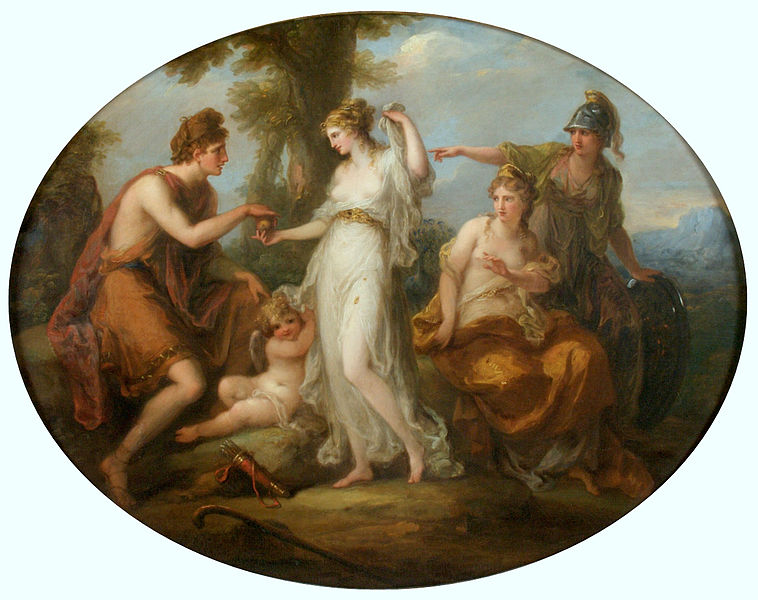
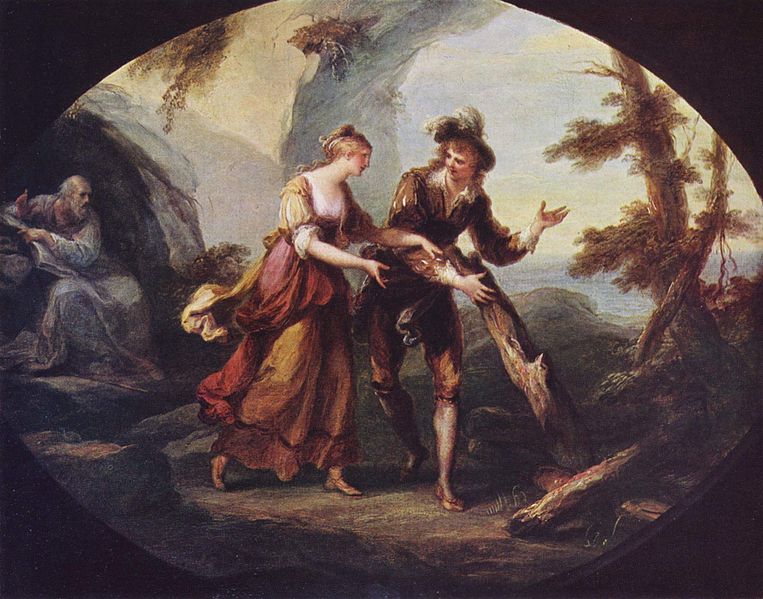
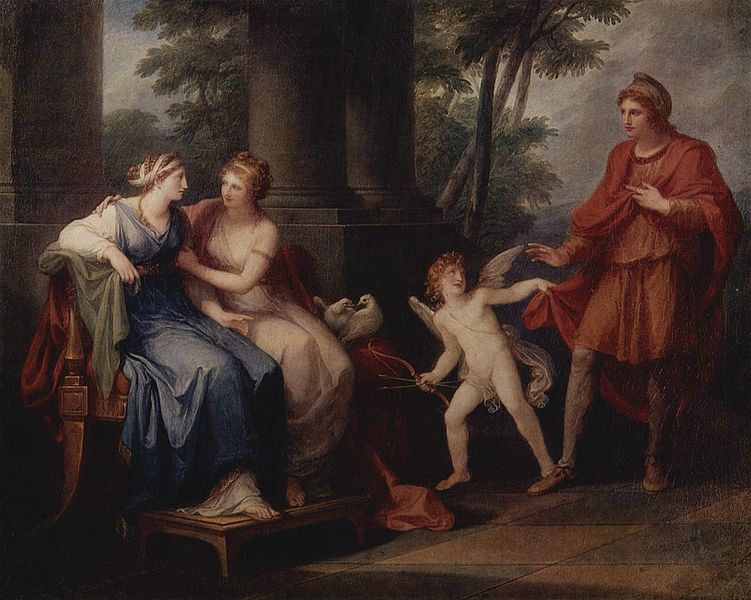
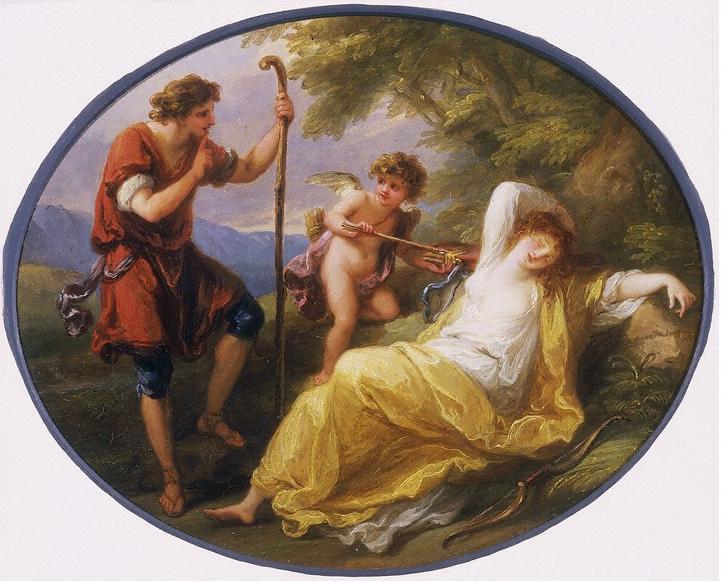
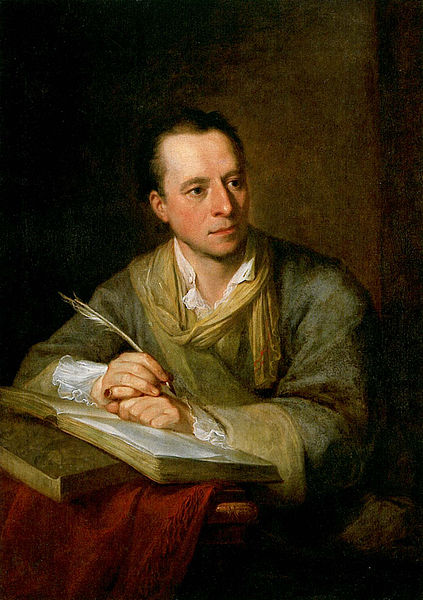
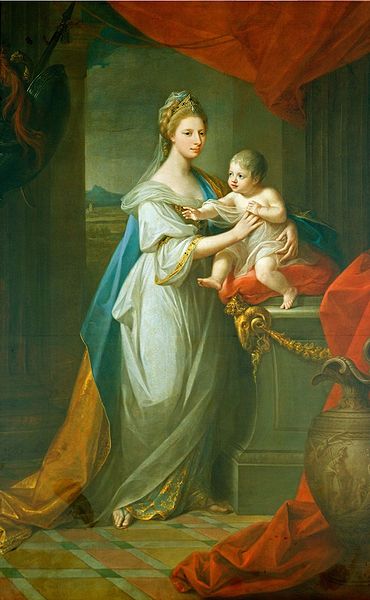
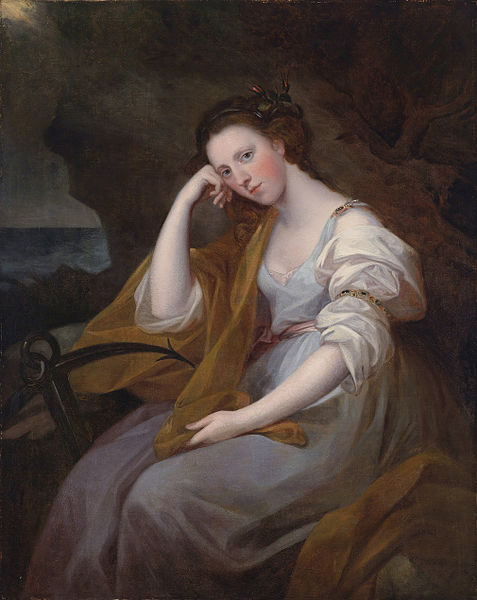
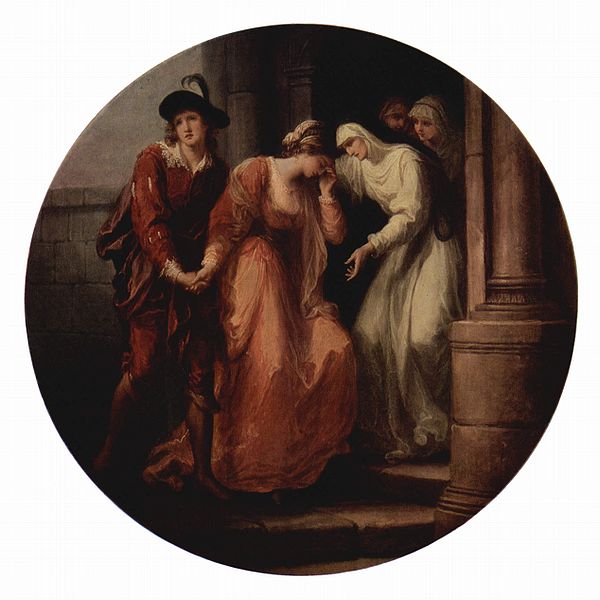
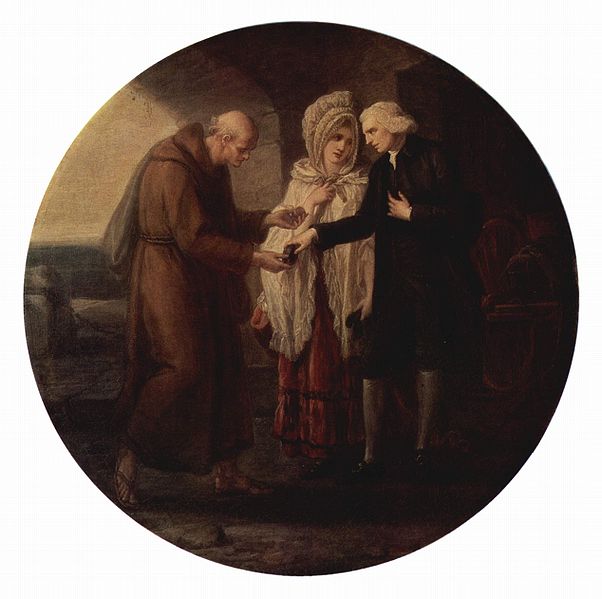
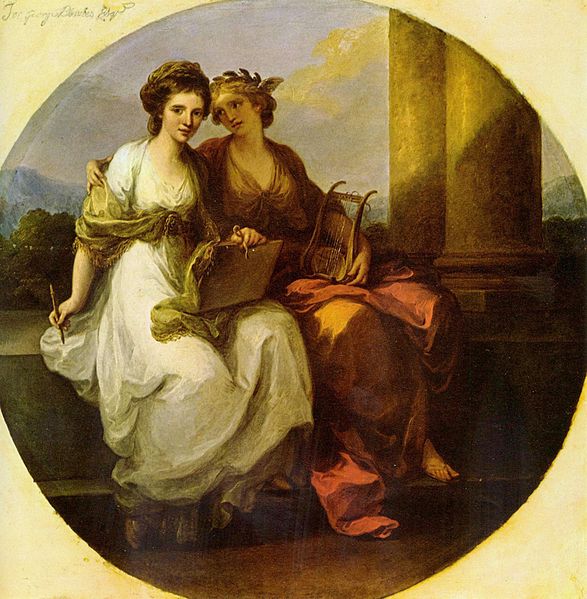
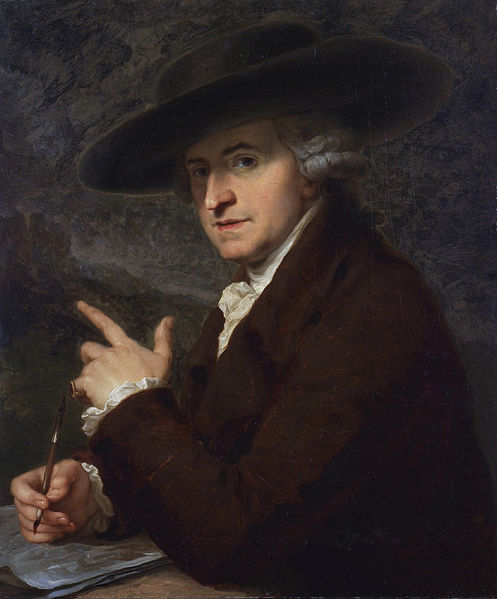
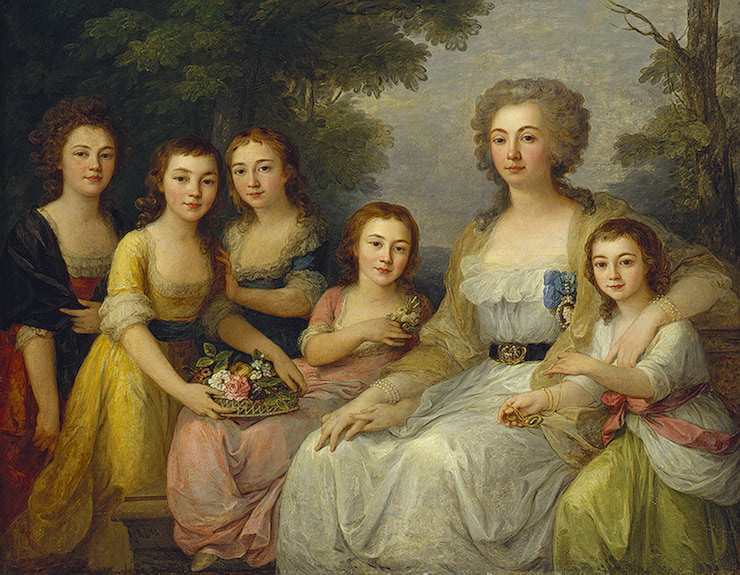
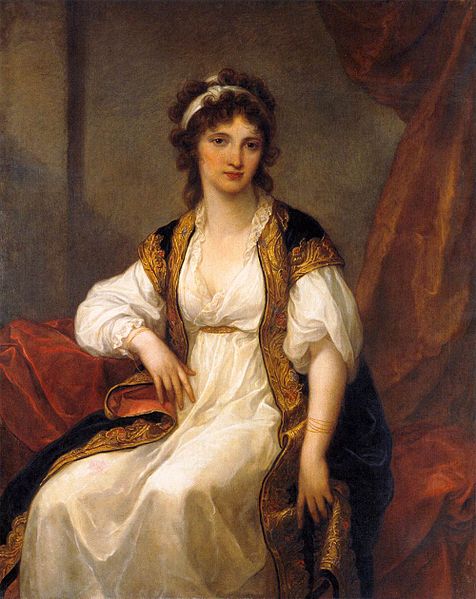
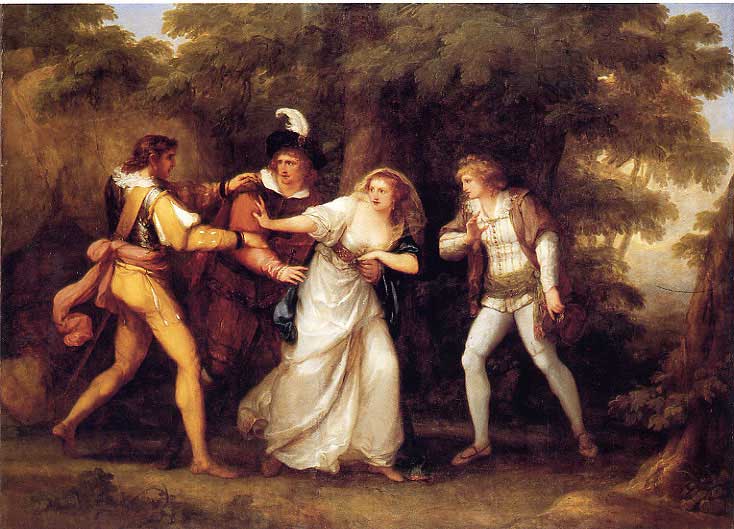
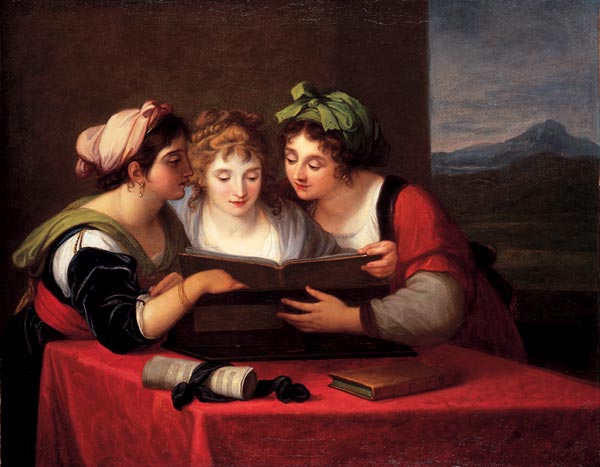
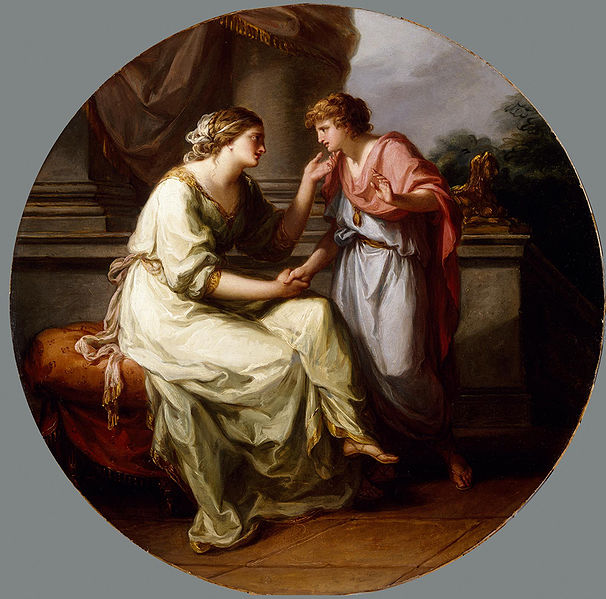
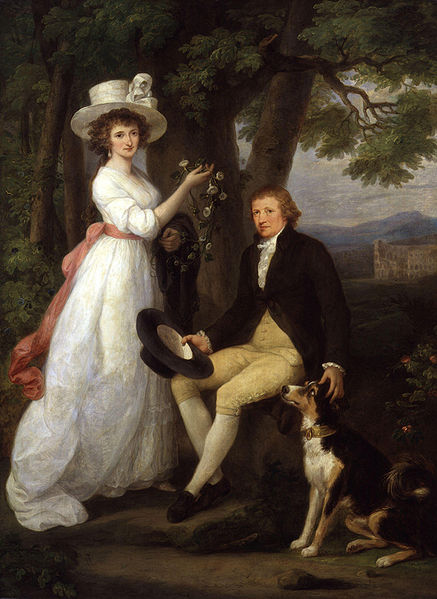
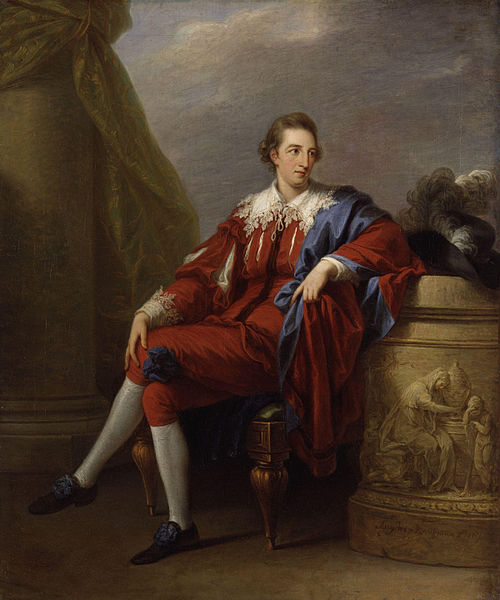
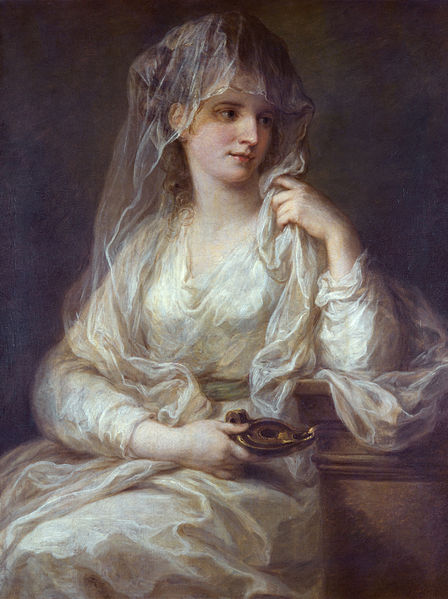
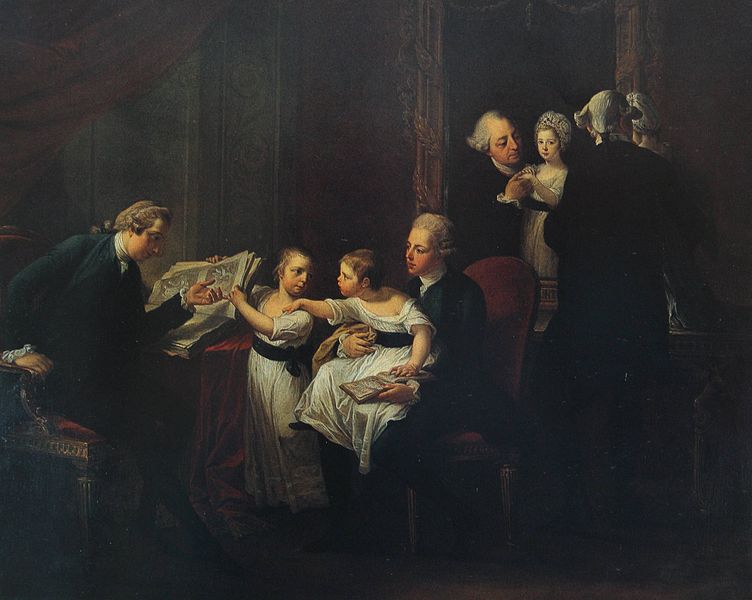
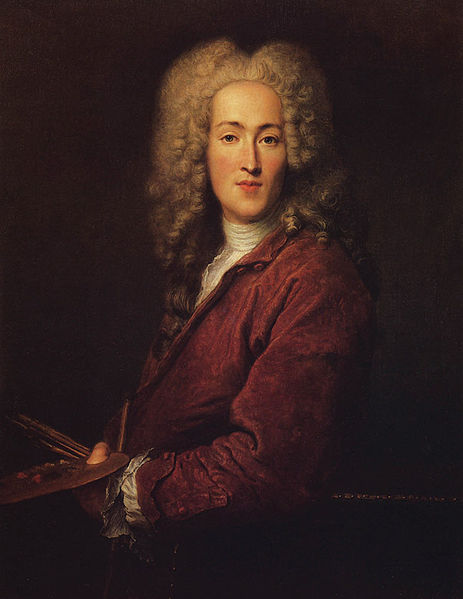
Nicolas Lancret (22 January 1690 – 14 September 1743), French painter, was born in Paris, and became a brilliant depicter of light comedy which reflected the tastes and manners of French society under the regent Orleans.
His first master was Pierre d'Ulin, but his acquaintance with and admiration for Watteau induced him to leave d'Ulin for Gillot, whose pupil Watteau had been. Lancret, who remained a pupil of Gillot from 1712 – 1713, was heavily influenced by the older painter, whose typical slender figures can be found in many of his pupil's younger works. Two pictures painted by Lancret and exhibited on the Place Dauphine had a great success, which laid the foundation of his fortune, and, it is said, estranged Watteau, who had been complimented as their author. In 1718 he was received as an Academician, from thereon becoming a very respected artist, especially among the admirers of Watteau. He completed works to decorate the Palace of Versailles, while his style was later to prove popular with Frederick the Great. Lancret's popularity was reflected by the decision to make him a councilor at the Academie in 1735.
Lancret completed numerous paintings, a significant proportion of which (over eighty) were engraved. Although he completed several portraits and historical pieces his favorite subjects were balls, fairs, village weddings and so forth. In this respect he was typical of Rococo artists. Some have claimed Lancret's work is significantly inferior to that of Watteau. In drawing and in painting his touch is often considered intelligent but dry; art historian Michael Levey remarked that Lancret was 'no poet by a charming essayist'. Lancret's characteristics are due possibly to the fact that he had been for some time in training under an engraver.
It is generally considered that the artist produced his best work towards the latter end of his life, displaying, in the minds of several art historians, an increasing ability to create a sense of harmony between art and nature, as in Montreir de lanterne magique, and a willingness to lend his, now bulkier, figures a firmer place in his compositions. These changes displayed the influence of later Watteaus like L'Enseigne de Gersaint. Lancret's last painting, Family in a Garden, The National Gallery, is considered by Levey to be his 'masterpiece'. The scene, which depicts a family taking coffee, has an intimacy and hint of humor that are considered captivating. The work's flowing lines, Rococoesque harmony of pastel colors, painterly style and charming subject matter (of a wide eyed young girl, surrounded by her happy family and natural, yet un-threatening setting, trying her first taste of coffee) are seen to display a delicate sense of vitality and freshness that anticipate the works of both Thomas Gainsborough and Jean - Honoré Fragonard.
The British Museum possesses an admirable series of studies by Lancret in red chalk, and the National Gallery, London, shows four paintings — the "Four Ages of Man" (engraved by Desplaces and l'Armessin), cited by d'Argenville among the principal works of Lancret.
Lancret was single for much of his life; however in 1741 he married the 18 year old grandchild of Boursault, author of Aesop at Court. Supposedly Lancret was induced to marry her after finding her and her dying mother living in poverty in an attic room and hearing that the daughter was soon to be compelled to enter a convent. Lancret died of pneumonia on the 14th of September, 1743.
